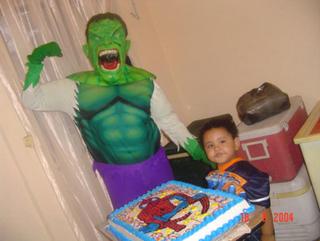Found Photos
Many years ago Greg Neville pointed out to me the strange middle-aged man looking out at us from the sides of old photo booths at Spencer Street Station. It was the same man in booth after booth. To deepen the mystery, in many of the pictures he was smiling with his eyes shut.
He told me, with the obviousness of a man explaining why your washing machine isn’t working, that the strange man was closing his eyes because of the flash. After going from booth to booth, replacing the chemicals and testing each machine, it must have become quite irritating...
I was amused to see a very similar scenario illustrated years later in Jean-Pierre Jeunet’s film “Amelie”, where the mystery of the photogenic maintenance man is a major plot point.
Pictures that you come across by accident in the street, or not by accident in a rubbish bin, can hold a peculiar intensity and fascination. By their nature, photographs often require contextual information not contained in the images themselves to reveal their meaning. Photojournalism as a semiotic category usually requires this supplied information to perform its function meaningfully, otherwise the images of war and conflict just float about in a sea of signifiers, looking for something concrete to hold on to.
In contrast, artists often exploit this ambiguity which is never very far away in any photographic image, for deeper effect. Some photographers of “the street” like Gary Winogrand or Henri Cartier-Bresson actively exploit ambiguity to heighten the sense of the surreal in the everyday, which amounts to a whole philosophy of life in their hands.
This sense of the marvellous in the commonplace, so absolutely central to surrealism as an idea, is almost impossibly difficult to manufacture deliberately, which is why those dilettantes spent so long playing with parlour games and automatic writing in order to short circuit the mind’s habit of censoring itself. This is why a photo you come across on a railway station platform can illicit the sense of the marvellous so seductively; because context is lost, the image itself lapses into a pretext for speculation.
It’s no surprise then, that one of the most powerful photographic exhibitions I’ve ever seen was in Sydney’s Police Museum, where I saw crime-scene and forensic photos from the 30s and 40s. The files attached to these images had been lost in an accident, so the often unremarkable scenes of domestic interiors and back alleyways were free to fill me up with their portents of dread and violence unencumbered by place and time and circumstance, a sensation weighing more heavily with every glimpse of the potential suggested in every image: the murder weapon sitting dumbly on the kitchen table, or the corpse leaking blood down the back of the settee.
I was reminded of this recently when I came across "Anonymous: Enigmatic Images from Unknown Photographers" by Robert Flynn Johnson and William Boyd, in Carlton’s Readings Bookstore. Why is it that death lurks in the emulsion of every photograph?
These impressions might not be the ones most apparent to viewers of the “Found Photos” website: http://www.10eastern.com/foundphotos, whose images seem to testify to the inexhaustible ability of the young to have a good time. Here they are, posing at the beach, staring at each other, snogging each other, drinking too much, puking in buckets. Altogether an unencumbered yyyyeaaaaahhhhhhhhh! to life.
And yet, there’s a weirdness in these pictures that plays on the mind, especially if you save the more interesting ones and examine them later.
“Found Photos” started when a guy called Rich Vogel was searching for MP3s using filesharing software. He was sifting through someone’s shared file list and came across a folder named “pictures”. Inside the folder were “20 or so digital camera pictures of this persons life taking pictures of himself, his friends etc. It made me wonder what else was out there, and after searching for more photos I found hundreds, thousands of them shared to everyone.” 
So the resulting collections are really an interesting digital update of the old practice of poring through the negatives in a junk shop, or, like my uncle, ferreting through the rubbish bins out the back of a suburban photomat where they threw the unwanted overexposures, the photographic mishaps and the uncollected home-made porn manufactured in local lounge rooms.
They’re also unlike their photomechanical cousins in their sheer profusion. In a film camera, you’re always aware that every click of the shutter is costing you money and every frame is one frame closer to the end of the film. In a digital, one can indulge the tourrette-like twitch like a compulsive until the battery runs out, which means that people are taking photographs of things and situations never previously considered photographically worthy, leaving an account of life almost completely uncensored by propriety, which may or may not be a good thing.
It could be that future generations may look at this stuff, if it survives at all, and form an image of our time like the one we have of Louis XIV or the Romans. One thing is certain though, and that’s that we’re a culture gorging ourselves to bursting with images, obsessed with looking, and the photograph is losing it’s power to disturb. In the found image though, we come up against the marvellous, and the photograph can appear as itself, mysterious and dreadful.

.jpg)





No comments:
Post a Comment